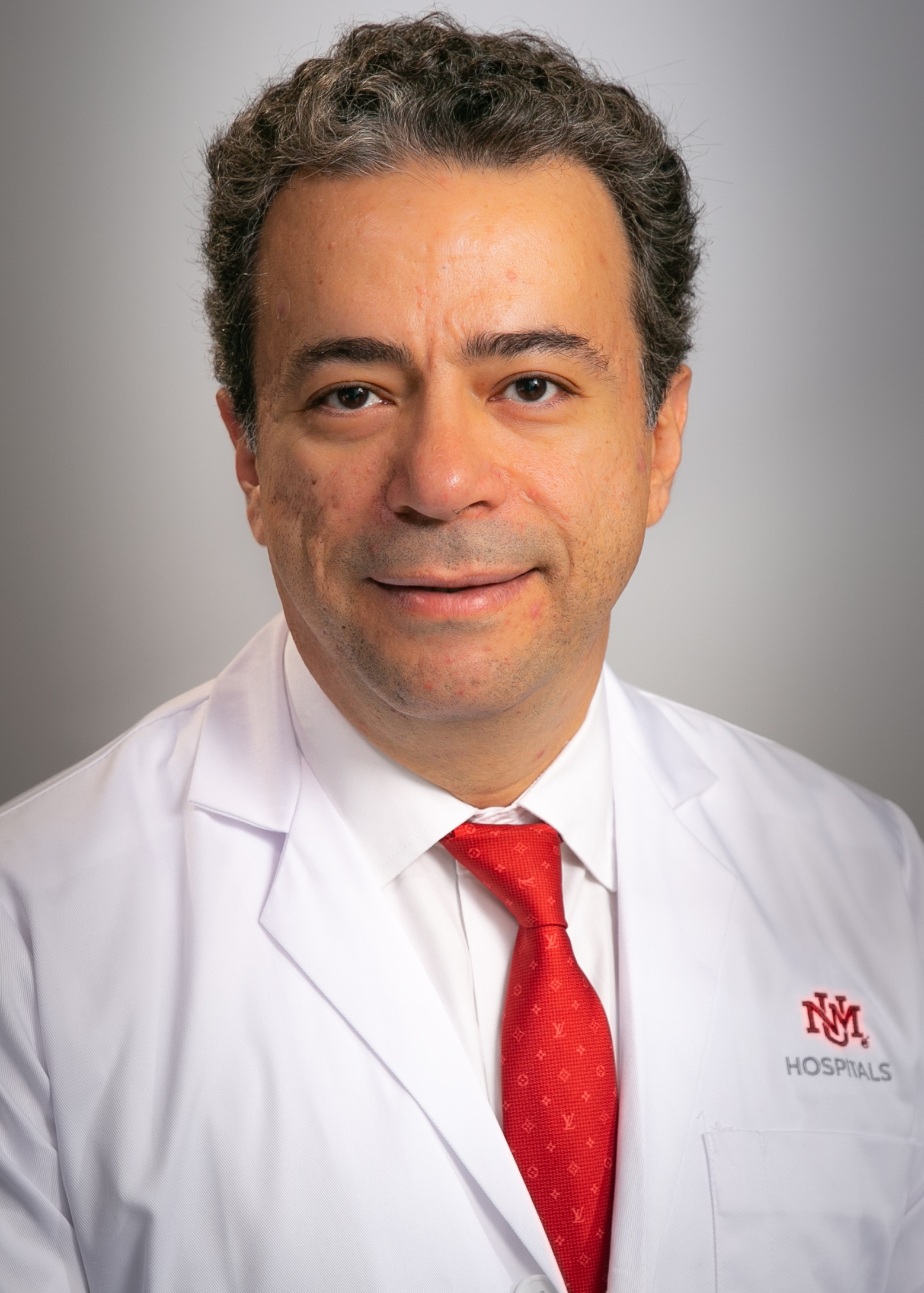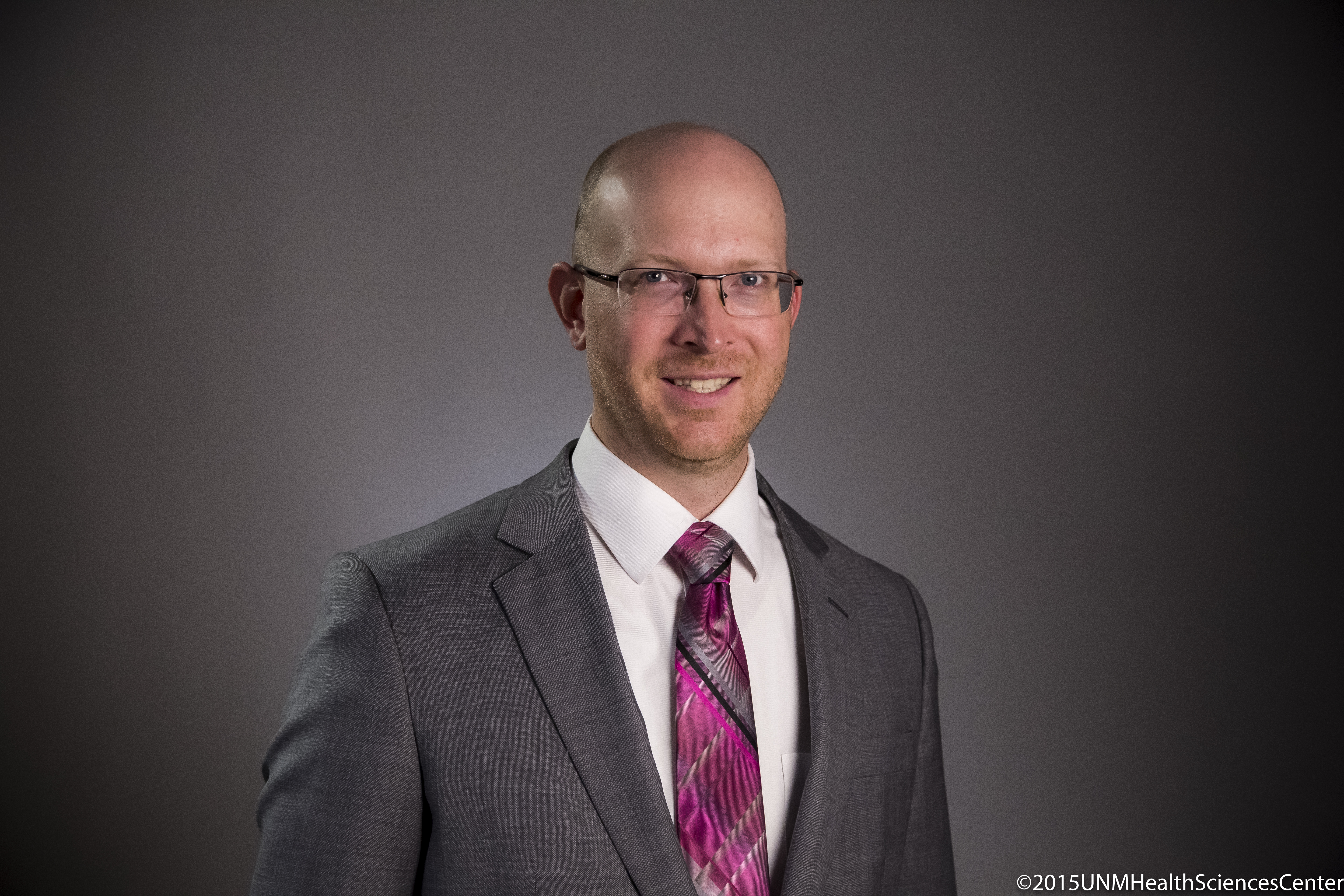
First in New Mexico
UNM Hospital Certified as a Comprehensive Stroke Center
The University of New Mexico Hospital has been recognized as the state’s first Comprehensive Stroke Center by The Joint Commission, a national accreditation agency for health care organizations and programs.
The decision earlier this month culminated a years-long effort to certify that UNM Hospital had in place all the resources needed to provide round-the-clock state-of-the-art care for stroke patients, says Torsten Rohde, RN, BSN, director of the hospital’s Stroke and Heart Failure programs.
“This is not just a team effort – this is a whole-village effort,” Rohde says, noting that UNM’s stroke program brings together neurologists, neurosurgeons, radiologists, neurocritical care specialists, emergency room doctors, rehabilitation specialists, pharmacists and specialized nursing and technical teams.
“A significant institutional and team commitment is involved in this kind of an achievement,” says neurosurgeon Andrew Carlson, MD, one of a team of specialists who provide 24/7 coverage for patients requiring endovascular surgery to repair aneurysms or retrieve clots from blocked vessels in the brain. “Those are themselves very limited resources. I’ve been wanting to make this program happen for many years. It takes a lot of things coming together.”
“This is a big thing for the state,” adds Michel Torbey, MD, a stroke specialist and chair of the Department of Neurology, who noted that UNM Hospital is connected with nearly two dozen rural and community hospitals throughout New Mexico via the Access to Critical Cerebral Emergency Support Services (ACCESS) telemedicine program.
ACCESS uses high-definition videoconferencing technology to enable emergency room doctors in community hospitals to consult with UNM specialists regarding their patients’ stroke symptoms, helping to determine whether to transport them to UNM Hospital if necessary. UNM doctors can even converse with family members or patients themselves to help determine their needs.
“We’re covering their stroke patients and giving them guidance to the best therapy, so we’re really acting in the spirit of what a comprehensive stroke center should be,” Torbey says. “These are the advantages that we can provide.”
Designation as a comprehensive stroke center indicates that a program has met stringent criteria both in patient care and in conducting related research.
“Certification recognizes health care organizations committed to fostering continuous quality improvement in patient safety and quality of care,” says Mark Pelletier, RN, MS, The Joint Commission’s chief operating officer for Accreditation and Certification Operations, and chief nursing executive.
“We commend UNM Hospital for using certification to reduce variation in its clinical processes and to strengthen its program structure and management framework for stroke patients
The incidence of stroke in New Mexico seems to be increasing. The UNM team already sees some 400 stroke cases a year, along with about 50 ruptured aneurysms. The majority of strokes are ischemic, involving a blocked artery in the brain that starves surrounding tissue of blood.
Some of those are treated with clot-dissolving medications, but in others, Carlson and his colleagues can mechanically retrieve a clot using a device at the end of a catheter threaded through a vein. Nearly 100 of these thrombectomy procedures were performed last year.
With these new techniques, patients may recover with few, if any, deficits. But with stroke, the saying goes, time is brain – so the sooner doctors intervene, the greater the chance of preserving brain tissue.
Carlson says artificial intelligence (AI) represents the next big opportunity to improve outcomes for stroke patients. These systems can “read” the results of a CT brain scan to recognize a blocked artery and immediately alert doctors, speeding up the diagnostic process.
“It’s our goal that we can get this kind of automatic AI-guided detection of large vessel occlusion in patients who would benefit from emergency treatment to get them identified as early as possible so we can facilitate getting them here and getting them taken care of,” he says.
“That is an enormous priority for us, now that we have this recognition, to really use this to serve the state’s population.”


